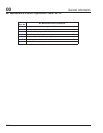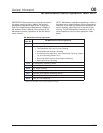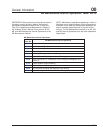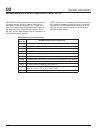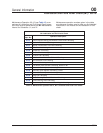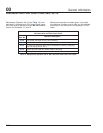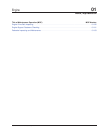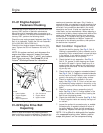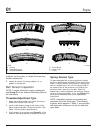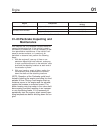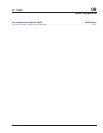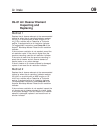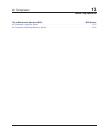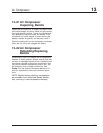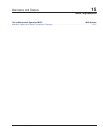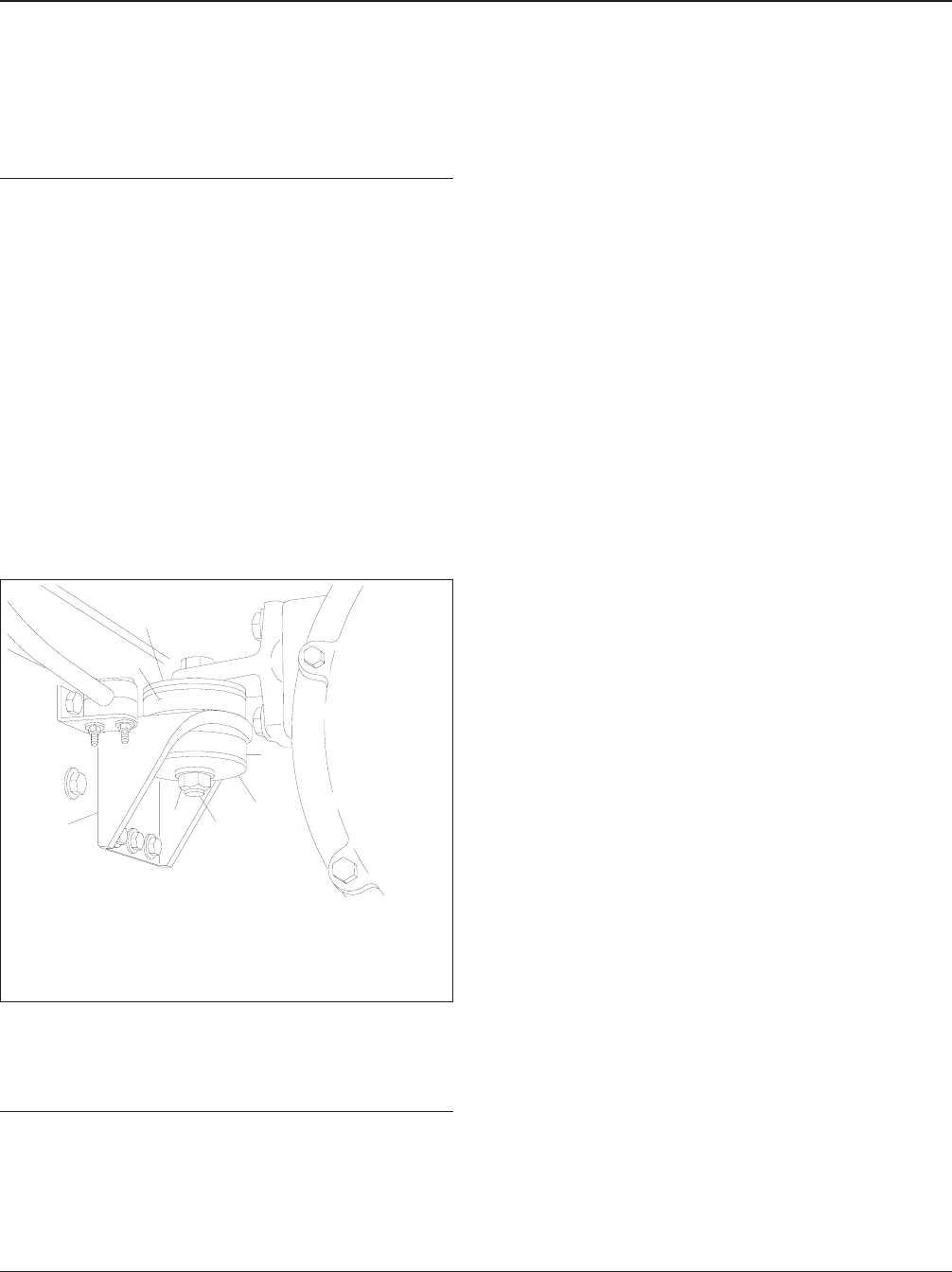
01–01 Engine-Support
Fasteners Checking
Front and rear engine supports for vehicles built from
January 2007 require no periodic maintenance.
Mounts should be inspected when the engine is re-
moved for service. For vehicles manufactured prior to
January 2007, perform the following check.
Check the rear engine-support fasteners (see Fig. 1,
Ref. 4) for tightness. Tighten the 3/4-inch fasteners
215 to 265 lbf·ft (292 to 359 N·m).
Check the front engine-support fasteners for tight-
ness. Tighten the 5/8-inch fasteners 125 lbf·ft (170
N·m).
NOTE: At engine overhaul, and whenever the
engine has been removed, inspect the lower
and upper isolators (Refs. 1 and 6), and replace
them if they are worn. See Group 01 of the
Acterra
®
Workshop Manual
for instructions.
01–02 Engine Drive Belt
Inspecting
Worn or loose drive belts may cause premature
bearing failure or engine overheating. Excessive ten-
sion, or too little tension on the belt may result in ex-
cessive and premature belt wear. Poly-V belts, or
serpentine belts, are retained by a belt tensioner that
requires no tension adjustment. Replace the engine
drive belt if any conditions described in the visual
description are found. V-belts are installed as indi-
vidual belts, and as matched sets. When replacing a
matched set of belts, always replace both belts at the
same time. Matched belts must be from the same
manufacturer. To inspect a belt, gently twist the belt
to view the belt sidewalls and bottom. Inspect all
drive belts for the following conditions, then perform
the belt tension inspection.
Belt Condition Inspection
1. Inspect the belt for glazing. See Fig. 2, Ref. A.
Glazing is represented by shiny sidewalls, and is
caused by friction created when a loose belt slips
in the pulleys. It can also be caused by oil or
grease contamination on the pulleys.
2. Check the belt for ply separation. See Fig. 2,
Ref. B. Oil, grease, or belt dressing can cause
the belt to fall apart in layers. Repair any oil or
coolant leaks that are affecting the belts before
replacing the drive belts. Do not use belt dress-
ing on any belt.
3. Check the belt for a jagged or streaked sidewall.
See Fig. 2, Ref. C. Jagged or streaked sidewalls
are the result of foreign objects, such as sand or
gravel in the pulley, or a rough pulley surface.
4. Check for tensile breaks (breaks in the cord
body). See Fig. 2, Ref. D. Cuts in a belt are usu-
ally caused by foreign objects in the pulley, or by
prying or forcing the belt during removal or instal-
lation.
5. Check for uneven ribs on serpentine (poly-V)
belts. See Fig. 2, Ref. E. Foreign objects in the
pulley will erode the undercord ribs, causing the
belt to lose its gripping power.
6. Check the drive belts for cracks. See Fig. 2, Ref.
F. Small irregular cracks are usually the signs of
an old belt.
7. Inspect the pulleys for excessive play or wobble.
Excessive play or wobble indicates a failure of
the pulley bearing. Check for belt squealing or
squeaking. Replace the bearings as necessary.
NOTE: If it is difficult to distinguish the location
of a supposed bearing noise, obtain a stetho-
scope and place it on the component being
f220047a
1
2
3
4
5
6
2
10/05/94
1. Lower Isolator
2. Engine Support
Washer
3. 3/4–10 Capscrew
4. 3/4–10 Hexnut
5. Engine Mount
6. Upper Isolator
Fig. 1, Engine Rear Mount
Engine 01
Acterra Maintenance Manual, January 2007 01/1



